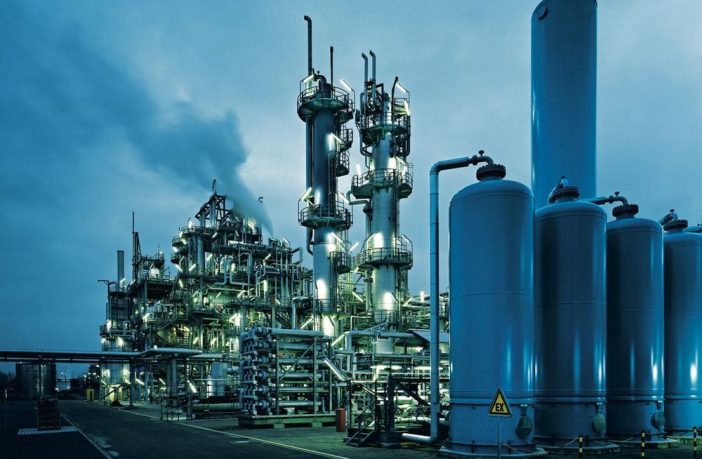- Six industry experts unpack the relationship between Liquifide Natural Gas (LNG) and hydrogen power.
German utility Uniper announced plans in April to set up a hydrogen hub near Bremen with the establishment of an import terminal for green ammonia. It originally planned a floating LNG terminal. Similarly, German energy giant RWE is exploring hydrogen imports via a planned LNG terminal near Hamburg.
LNG and hydrogen might seem to be in direct competition, but the relationship is more complicated. Both LNG and hydrogen developments heavily depend on the supply side, said Sjaak Poppe, spokesperson for the energy transition of the Port of Rotterdam.
“LNG is a transition fuel: better than the diesel and HFO, but not zero emission, which hydrogen is (if it’s green hydrogen). In the coming years there is not enough green electricity to produce enough green hydrogen to replace all the current use of fossil fuels and feedstock, so LNG is a very attractive fuel for the next few decades, reducing emissions in both CO2 and small particles (air quality),” said Poppe. “Both LNG and green hydrogen offer opportunities for companies to develop new business models and for governments to achieve climate targets and create wealth. As the Port of Rotterdam Authority, we want to contribute to this.”
The Port of Rotterdam Authority is currently involved in several projects looking at the use of hydrogen as a transport fuel throughout the chain, from production and transport to import and transit.
The relationship between LNG and hydrogen also depends also on the time frame, explained Thierry Bros, professor of international energy at Sciences Po.
“LNG and hydrogen are unlikely to compete in the short to mid-term in Europe. Hydrogen could displace some pipe gas first as locally produced hydrogen will need to find some demand,” Bros told pv magazine. “It could be blended with gas first (non dedicated pipes). Imports/exports of hydrogen could happen mostly under the gas phase via repurposed pipes (mostly dedicated hydrogen pipes in this case). Transporting liquid hydrogen is only going to be done later and mostly perhaps only for Japan that has no pipe gas access. Liquid hydrogen is a very inefficient way of transporting energy and it could be better in Europe to keep importing LNG and do some CCUS.”
In general, experts expect both competition mechanisms and synergies between LNG and hydrogen.
“LNG is more advanced in technology readiness level, but hydrogen and ammonia are the only fuels which can comply with the future emission targets,” said Alexander Saverys, CEO of CMB.TECH, a diversified shipping and logistics group that is headquartered in Antwerp. “The use of low flashpoint fuels such as hydrogen and LNG use the same design philosophy and require similar safety measures and equipment. Training programs to use these fuels are similar as well.”
The relationship will also be country-specific, as the prospects of hydrogen and LNG heavily depend on existing infrastructure.
“For Estonia, I do not see hydrogen and LNG to compete in the near future. This is simply because Estonia currently lacks a proper gas pipeline infrastructure suitable for hydrogen. Recent research outcomes show that Estonian pipelines can not carry a high percentage of hydrogen even if mixed with methane. So the odds of competition between hydrogen and LNG are rather low,” Ivar Kruusenberg, the founder and CEO of PowerUP Energy Technologies, told pv magazine.
But this does not mean there is real competition, Kruusenberg said, noting that they will most likely complement each other.
“It can be expected that the early adopters of LNG are also the first to shift to hydrogen, which includes the transport sector as well as what becomes to the small-scale heat and power generation,” he said. “Companies that were earlier investing in LNG are shifting to hydrogen due to the green deal goals that the EU is aiming to achieve by 2050. When we talk about 100% sustainable energy, hydrogen does trump over LNG. In fact, the existing LNG infrastructure will only help in the transition to hydrogen distribution.”
Keeping considerations on CO2 emissions aside for a moment, there is possibly a stronger level of competition between LNG and hydrogen in the transportation sector.
“Until recently, LNG was only used to transport methane over the oceans and then to transform it into gaseous form for injection into the gas grid. Recently, however, LNG started to be used in liquid form (at atmospheric pressure in an isolated reservoir). Diesel and gasoline are widely used around the world because they are liquid, the easiest physical form to handle,” Samuel Furfari, the president of the European Society of Engineers and Industrialists, told pv magazine. “Therefore, LNG in this liquid form has a huge advantage over gaseous natural gas. This justifies the development of LNG as a fuel for heavy transport (trucks, trains, ships) or to use methane in SMEs located in areas that the gas networks do not reach. Instead of dreaming of using methane transformed into hydrogen to use it as fuel, it is much more rational from an energy systemic point of view to use LNG directly. Simpler, cheaper and available now without any risk.”
Hydrogen still needs to reach maturity. However, this will require massive investments.
“In some of these cases, green hydrogen will replace the use of natural gas, but could at the same time promote life extension of gas infrastructures, converting them to carbon-neutral gases,” said Diogo Almeida, head of hydrogen business development at Lisbon-based Galp Energia. “For this to succeed, hydrogen needs to reach technological maturity and economic competitiveness, requiring massive investments and time, during which natural gas will the best option available to reduce carbon footprint and improve life quality of many communities.
Author: Sergio Matalucci
This article was originally published in pv magazine and is republished with permission.















